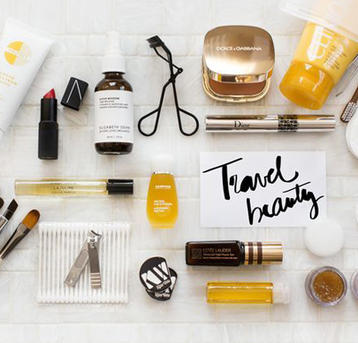According to industry experts, consumers aren’t what they used to be. The online world’s provision of a wealth of information at our fingertips has smartened up audiences, with the advertising of yesteryear no longer holding the same sway it once did. For media, this means advertorials and native content must grow increasingly sophisticated.
Gritty Pretty founder Eleanor Pendleton explains: “Our readers are extremely savvy, which is another reason why we're big on non-traditional advertising. Our advertorials mimic real editorial content, but serve to accomplish the goals of both the brand and publisher, as opposed to standard banner advertising which we believe does not strongly resonate with readers."
But just how to craft that influential piece of content is easier said than done. BD speaks to a range of beauty media to find out all their tips...
Don’t beat around the bush
A clear message for consumers is key to a successful advertorial. Australian Women’s Weekly’s beauty editor Sheree Mutton comments: “Advertorials must have a clear message that the client wants to communicate to the audience. Consumers are constantly bombarded with advertisements every day, so the advertorial must have a punchy headline and clearly explain why the service or product would be beneficial to the reader.” beautyheaven editor Rosemary Bracey agrees, explaining, “A successful advertorial needs to be carefully crafted to reflect the key messages of the brand/product while also reflecting the tone of the publication. It’s important to avoid making the reader feel like they’re being bombarded by an ad for a brand, but rather reading an informative and authentic piece of content.”
BEAUTYcrew beauty editor Iantha Yu believes sponsored content cannot be so decorative that it disguises its purpose. She explains of her publication: “For us, advertorials need to be clear on what they are offering to our audience while addressing the marketing needs of our partners. We always ask, ‘Why would our audience want to know about this product? What are they getting out of this story?’”
Stay true to your tone
A successful advertorial is one that fits in seamlessly to the publication. “The advertorial needs to reflect the style of the publication in which it sits,” says Mutton. Women’s Health beauty editor Ashleigh Austen deliberates that fitting into the same tone and style of surrounding content is integral to the advertorial feel to the consumer, commenting that a successful advertorial is: “A piece of content that has been designed in synergy with the mag aesthetic and tone. Striking a balance between integrating it into the book and clearly marking it as advertorial needs to be paramount.” beautyheaven hair & perfume editor Astrid Taemets explains: “[A bad advertorial] sounds, looks and feels sponsored. If it sounds forced or disingenuous, the reader is less likely to want to read it.”
What is truly successful? Not being able to determine between what is sponsored and what is not, says Primped editor Mel Mason. “I think feeling natural is the definition of success when it comes to advertorials. From a reader perspective, the best advertorials I've read have been when I don't even realise it's not simply editorial! I remember one when I was a teen that was a diary of a girl which had a page each month in my favourite magazine. It ran across six months, had little cliffhangers (would Dean ask Polly out? Check next month!), I ate it up and never once did I realise it was an advertorial!”
Think outside the box
Creativity is key when it comes to crafting influential advertorials that draw in the reader and engage a strong response. It’s a matter that Pendleton takes seriously, focusing on innovation in the digital domain for her online magazine. “Gritty Pretty readers are incredibly responsive to our digital magazine advertorials because we place a huge emphasis on cutting-edge animation, sophisticated design and product education.”
Mason agrees that thinking outside the box is an important aspect of advertorial success – particularly if you want to stand out. “I think creativity is a big plus – the best advertorials I've been involved in have had a great visual aspect alongside the actual copy, like a how-to photoshoot. At the end of the day, readers want entertainment or education so if you can deliver one (or both!) in your advertorial you've already got them hooked and the product mentions will feel natural and actually be noticed.”
Collaborate with your client
At the end of the day, advertorials are paid content meaning that whatever the client says (to an extent) goes. Working together in collaboration with a client is key to conveying the brand’s message successfully, while remaining true to the publication’s tone.
For Pendleton the collaboration works as follows: “When crafting an advertorial, our team discusses with the client their key objectives and the campaign's focus. Our team then presents the best execution option, which results in high click-through, conversion and time spent on page.” It’s a similar process to BEAUTYcrew’s, with Yu explaining: “Usually we brainstorm several story ideas for the client to pick from. We always take our partners’ feedback on board and try to meet it, while ensuring we deliver the audience to the article.”
But collaboration should also be a concept front of mind for the client, says Mason. “It's their advertorial in the end! But I also would encourage brands to listen to the editorial contact for the advertorial piece as well because we know our reader and we want the advertorial to do well just as much as you do, so any hesitations or tips we have are in your best interests.”
Taking into account opinions from both teams sits at the heart of a truly successful advertorial. As Yu summarises: “A successful advertorial is one that works well with our audience as much as our partners.”




